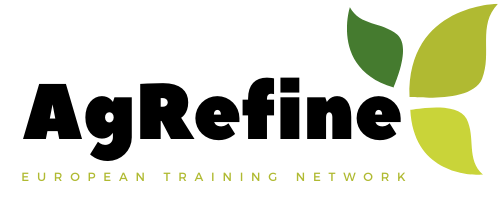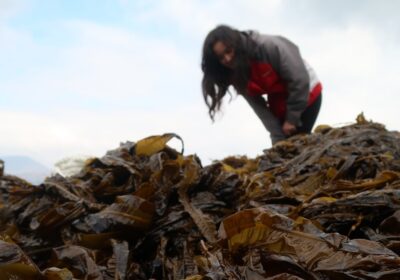It can be easy to feel overwhelmed looking at the challenges that a “bioeconomy revolution” entails. However, all these challenges stem from the fact that the bioeconomy aims to ensure food security and find solutions to avoid climate change and resource scarcity. Not an easy task for sure. The ambition of replacing fossil-based production of food, feed, energy and materials with bio-based ones was until a few years ago beyond imagination, because it is indeed an ambition to completely change how our society works, with new technologies, new infrastructures and new relationships among many different sectors and stakeholders. Today we are aware that these changes must become a reality as quickly as possible (we actually have a timeline set by the IPCC, which warned us that we only have 10 years left to limit global warming’s effects and that we must reach climate neutrality by 2050) and they need to be achieved in the most sustainable way.
As an ESR in the bioeconomy field and in the AgRefine project, I feel part of a big crew embarked in one of the biggest missions of our time, which can be overwhelming, but definitely exciting at the same time. This mission is so challenging that we might compare it with the Apollo Mission. Except that our mission is, overall, much more complex than going to the moon and back in one generation, as pointed out by Mariana Mazzuccato, an economist and Professor in Economics of Innovation and Public Value at UCL, in the 2018 European Commission Report about Mission-Oriented Research & Innovation in the European Union. The Apollo mission was in fact purely technological, when most of the challenges today are social, political and require regulatory challenges. But can we really make a comparison or learn something from the mission that 60 years ago brought us to the moon? According to Mariana Mazzuccato we can, and we should. Why?
The Apollo mission was addressing one clear and ambitious objective, send a man to the moon and bring him back safely. It had a perfectly designed structure with objectives, sub-projects, goals, schedules, timelines and budgets, and implemented an innovative management process to set clear functions and responsibilities. Moreover, it required investments and innovation not just in the aerospace sector, but across a variety of sectors (food, medicine, computation, materials, biology, microbiology, geology, electronics, and communications) to which a big boost was given. This cross-sectoral, cross-disciplinary and cross-actors innovation process, as well as setting clear goals, were fundamental aspects of the development and success of the Apollo mission as they are for today’s mission of turning our fossil-based economy into a bio-based economy.
So now the question is: are we following the same successful path or not?
We surely have some clear goals and sub-goals set by the European Commission. They are included in the 2018 updated Bioeconomy Strategy which, differently from the 2012 Strategy, recognizes the societal relevance of bioeconomy and the need of including sustainability and circularity. These three goals are:
- To rapidly introduce bioeconomies in all Member States, in particular in those countries and regions with higher potential in terms of biomass and waste stream that are not yet being valorized;
- To create an investment platform in order to better introduce bioeconomies to the market and reduce risks for privates willing to invest in sustainable bio-based innovations;
- To protect ecosystems understanding the ecological boundaries of the bioeconomy. This implies the use of a monitory system to understand progresses toward a truly sustainable and circular bioeonomy.
As the Apollo mission taught us, cross-sectoral efforts are necessary to achieve these goals. However, there is still a need of increased connections and integrations between industrial sectors and actors for the bioeconomy. Increasing connections and integrations derive from an overall clarity on governance structure, dynamics and responsibilities, which is still missing. This means that in the field of the bioeconomy we still have to answer some fundamental questions such as: who’s in charge of what, across the whole innovation chain? Which risks are being taken and by whom?
In the big puzzle of experimentations that are happening in the bioeconomy field in Europe, AgRefine aims at combining technological innovation with the study of social, economic and environmental aspects of operations across the whole innovation chain using a cross-disciplinary and cross-sectoral approach. It aims at answering some of the questions that are still keeping us away from reaching the goals set by the Commission. In the project, each of us ESRs will try to give a small boost to this huge Earth-ship that needs to reach Europe (and not only) quickly and safely for everyone. The mission for us has just begun, but we will put all our efforts into making it a success!
Image Credit: NASA




